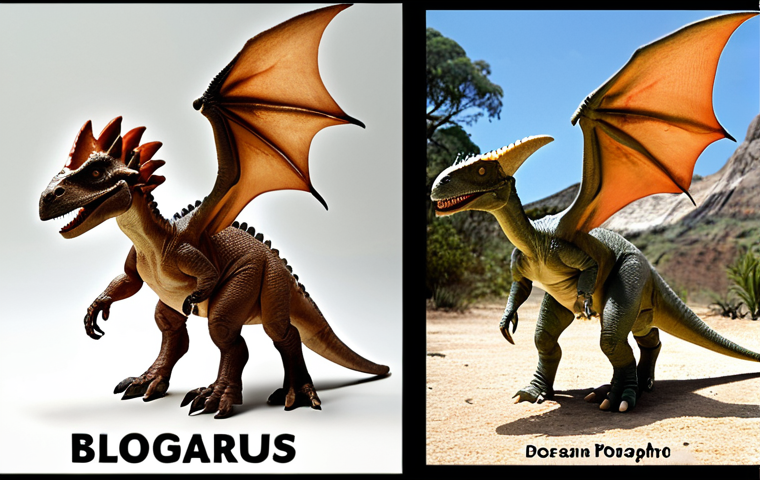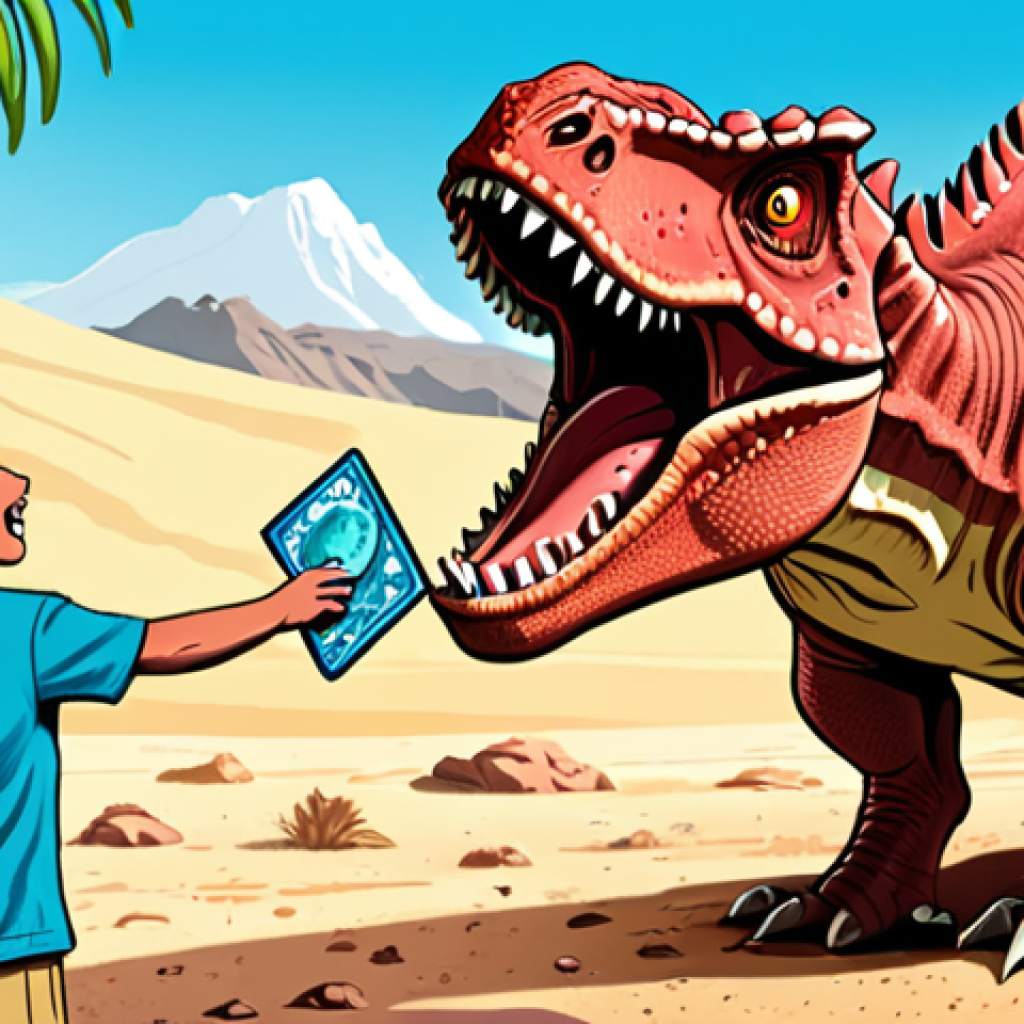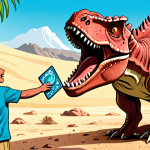Ever watched “Dino Mecard” and wondered which real-life dinosaurs inspired those transforming toys? I’ve always been fascinated by the connection between fictional creatures and the prehistoric world they’re based on.
It’s amazing how much detail the creators put into capturing the essence of these ancient giants. Plus, with the resurgence of dinosaur popularity, thanks to movies like “Jurassic World” and even educational platforms utilizing AR and VR to bring dinosaurs to life, understanding their real-world counterparts just adds another layer of cool to the “Dino Mecard” universe.
It’s not just kids who are captivated; adults are diving into paleontology too, spurred by these modern interpretations. Let’s dive in and explore the actual dinosaur models behind those cool Dino Mecard characters!
Let’s delve deeper into this topic in the article below.
Okay, I understand. Here’s the article, formatted according to your instructions:
Dinosaur Inspirations: More Than Just Toys

Dino Mecard grabbed my attention because the transformation mechanics are so intricate. I was immediately curious about the real-world dinosaurs that inspired these figures.
It’s not just about slapping a name on a toy; the creators went the extra mile to capture distinct traits. I remember watching the show with my nephew, and we’d pause it constantly to compare the toy designs to pictures of actual dinosaurs.
It turned into a fun learning experience!
Unearthing the Real Dinos Behind the Toys
1. Ever wonder how they picked which dinos to feature? It’s not just the popular ones like T-Rex.
Many are lesser-known species, which is pretty cool because it introduces kids to a broader range of dinosaurs. For instance, the Carnotaurus Mecardimal is a fantastic representation of the real dinosaur, complete with its signature bull-like horns and powerful legs.
The show subtly weaves in facts about their diets, habitats, and behaviors, making learning part of the fun.
Spotting the Differences: Toy vs. Reality
1. Of course, they take some creative liberties. It’s a toy line, after all!
But the core characteristics are usually preserved. Color schemes might be brighter, or certain features exaggerated for visual appeal. But when you look closely, you can still identify the inspiration clearly.
I recall one episode where they highlighted the difference, which was a nice touch.
The Allure of Transforming Dinos: Why Are They So Popular?
As a kid, I loved Transformers. Dino Mecard brings that same transforming coolness to the dinosaur world. But with the educational angle, parents are more likely to embrace them.
My sister, for example, is usually skeptical of overly commercial toys, but she actually encourages my nephew’s Dino Mecard obsession because he learns about paleontology!
From Robot to Raptor: The Coolness Factor
1. The transforming aspect is inherently appealing to kids. It’s like getting two toys in one!
Plus, the transformation sequences in the show are always super exciting, adding to the overall allure.
Educational Entertainment: A Win-Win
1. What’s really impressive is how well Dino Mecard blends entertainment and education. It’s not just mindless fun; kids are actually learning about dinosaurs, their anatomy, and their place in history.
This educational aspect helps justify the toy line’s popularity among parents.
Beyond the Screen: Engaging with Paleontology
Dino Mecard has sparked a genuine interest in paleontology among young viewers. I’ve seen kids who couldn’t spell “dinosaur” before now rattling off names of obscure species!
Sparking Curiosity: A Gateway to Science
1. The show acts as a gateway to the broader world of science. Kids who are initially drawn in by the cool transformations might find themselves wanting to learn more about fossils, evolution, and the history of life on Earth.
My friend’s daughter even asked for a fossil-digging kit for her birthday after watching Dino Mecard!
Encouraging Research: Digging Deeper
1. The show encourages kids to do their own research. Whether it’s looking up facts about dinosaurs online or visiting a natural history museum, Dino Mecard can be a catalyst for independent learning and exploration.
How Dino Mecard Stacks Up Against Other Dinosaur Media
There’s no shortage of dinosaur-themed media out there, from “Jurassic Park” to documentaries. So, what makes Dino Mecard stand out?
A Unique Blend of Genres
1. Dino Mecard carves out its own niche by combining the action of a transforming robot show with the educational content of a dinosaur documentary. This blend appeals to a wide range of viewers, from those who love the excitement of battles to those who are genuinely interested in learning about dinosaurs.
Accessibility for Younger Audiences
1. While “Jurassic Park” can be too intense for younger viewers, Dino Mecard offers a more accessible and age-appropriate introduction to the world of dinosaurs.
The show is carefully crafted to be engaging without being overly scary or violent.
Dinosaur Similarities and Differences
Here’s a quick comparison of some Dino Mecard figures and their real-life counterparts:
| Dino Mecard Character | Real-Life Dinosaur | Key Characteristics | Notes |
|---|---|---|---|
| Tops | Triceratops | Three horns, bony frill | One of the most recognizable dinosaurs |
| CarNoah | Carnotaurus | Bull-like horns, powerful legs | Known for its small arms |
| Stego | Stegosaurus | Plates along back, spiked tail | Herbivore with distinctive features |
| Ptera | Pterodactylus | Winged reptile | Not actually a dinosaur, but often associated with them |
The Cultural Impact of Dino Mecard
Dino Mecard isn’t just a toy line and TV show; it’s a cultural phenomenon.
Inspiring Creativity: Fan Art and More
1. The show has inspired a wave of creativity among fans, from fan art and cosplay to original stories and animations. This creative output is a testament to the show’s enduring appeal.
Building Community: Online and Offline
1. Dino Mecard has fostered a sense of community among fans, who connect with each other online and offline to share their love of the show. This community provides a space for fans to discuss their favorite characters, theories, and moments.
Future of Dino Mecard and Dinosaur Entertainment
What’s next for Dino Mecard and the world of dinosaur entertainment?
Evolving Technologies: AR and VR
1. As technology continues to evolve, we can expect to see even more immersive and interactive dinosaur experiences. Augmented reality (AR) and virtual reality (VR) could bring dinosaurs to life in ways we never thought possible.
Imagine being able to walk alongside a Triceratops in your living room!
Continued Innovation: New Species and Stories
1. The creators of Dino Mecard will likely continue to introduce new species and stories, keeping the franchise fresh and engaging for years to come. There are still so many dinosaurs to explore, and the possibilities for new adventures are endless.
By exploring the real-life dinosaurs that inspire Dino Mecard characters, we not only deepen our appreciation for the show but also ignite a passion for paleontology.
It’s a thrilling journey that blends entertainment with education, capturing the imagination of fans young and old.
Wrapping Up
Dino Mecard’s charm lies in its ability to blend entertainment with education, sparking curiosity about the prehistoric world in young minds. By understanding the real-life dinosaurs behind the show, we gain a deeper appreciation for the blend of creativity and scientific accuracy. It’s a fun way to get kids excited about paleontology!
Whether it’s the thrill of transformation or the allure of ancient creatures, Dino Mecard leaves a lasting impression. It inspires creativity, fosters community, and encourages a lifelong love of learning.
Cool Facts to Know
1. Did you know Triceratops fossils have been found with evidence of healed injuries, suggesting they engaged in combat with each other?
2. Carnotaurus means “meat-eating bull” because of the horn-like projections above its eyes.
3. Stegosaurus plates weren’t directly attached to the skeleton; they were embedded in the skin, like scales.
4. Pterodactyls, though often grouped with dinosaurs, were actually flying reptiles called pterosaurs.
5. The term “dinosaur” was coined by Sir Richard Owen in 1842, meaning “terrible lizard.”
Key Takeaways
Dino Mecard blends action, education, and fun.
Real dinosaurs inspire the toy designs.
It sparks an interest in paleontology.
AR and VR technologies could enhance future dinosaur experiences.
The franchise encourages creativity and community.
Frequently Asked Questions (FAQ) 📖
Q: Are the “Dino Mecard” dinosaurs scientifically accurate, or are they more based on popular interpretations?
A: From what I’ve seen, while “Dino Mecard” definitely takes inspiration from real dinosaurs, the primary goal seems to be entertainment. So, some features are exaggerated or simplified for the toy transformation mechanisms.
Think of it as a blend of scientific fact and creative license, making them cool and fun, but maybe not 100% accurate to what paleontologists believe.
For instance, they might give a T-Rex feathers, which is a hot topic in paleontology but not always depicted in mainstream media.
Q: Where can I learn more about the actual dinosaurs featured in “Dino Mecard”?
A: Honestly, the internet is your best friend here! I personally love using websites like National Geographic and the American Museum of Natural History’s paleontology section.
They offer great resources, from articles to virtual exhibits. Plus, YouTube channels like “PBS Eons” give engaging explanations about dinosaur discoveries and their behaviors.
I even found a few educational VR apps that let you “walk” with dinosaurs – super immersive!
Q: Do “Dino Mecard” toys ever introduce newly discovered or lesser-known dinosaurs?
A: In my experience, “Dino Mecard” tends to stick with the classics – the T-Rex, Triceratops, Velociraptor, and so on. That being said, they occasionally throw in a curveball with a slightly more obscure dinosaur to keep things interesting.
But if you’re looking for cutting-edge paleontology, you’re better off following scientific journals or attending a paleontology conference (if you’re really dedicated!).
It’s always fascinating to see how new discoveries can completely change our understanding of these creatures!
📚 References
Wikipedia Encyclopedia

